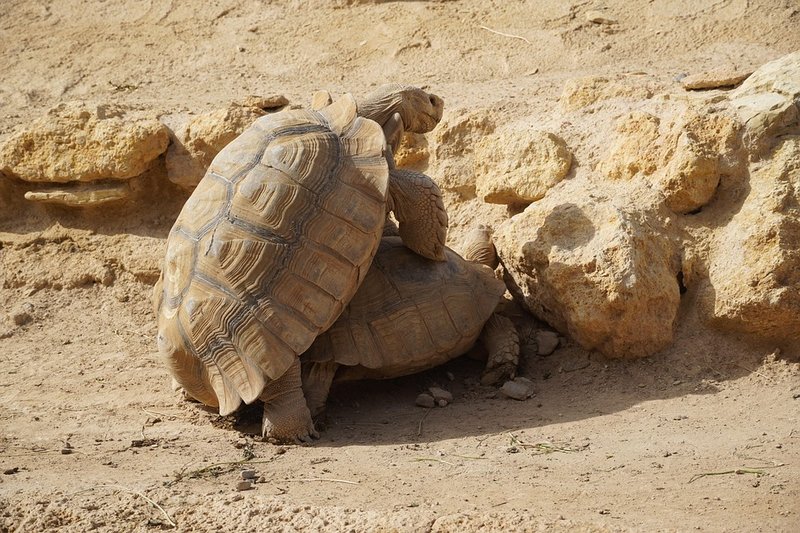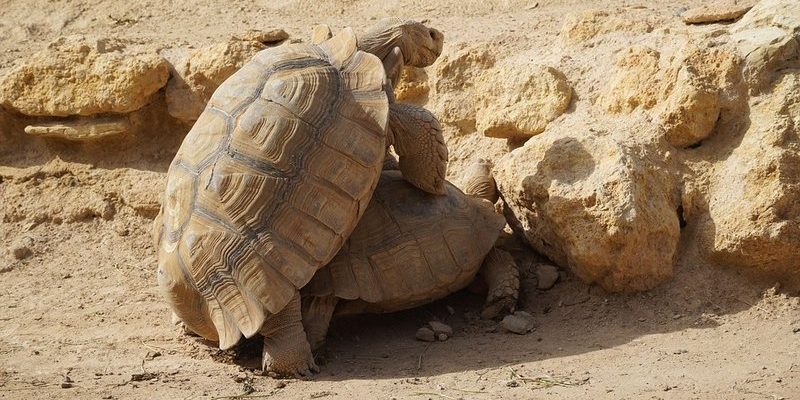
Let’s dive deep into the quirky and intriguing ways tortoises find mates, court each other, and ultimately reproduce. I promise you, it’s more than just a simple stroll in the park! From elaborate courtship rituals to the challenges of laying eggs, understanding how tortoises breed gives us a glimpse into their remarkable world. So, grab your favorite drink, and let’s chat about tortoises!
Understanding Tortoise Mating Rituals
Tortoises aren’t exactly known for being flashy, but their mating rituals can be surprisingly engaging. When a male tortoise is ready to mate, he often uses a combination of visual displays and sounds to attract a female. You might catch him bobbing his head, making soft grunting noises, or even charging at a potential mate. It’s a bit like a slow-motion romance movie.
During these courtship displays, the male may also try to get the female’s attention by gently nudging her. This gentle push serves as an invitation rather than aggression. If the female is receptive, she’ll often respond positively by allowing him to get closer. Here’s the thing: not all male-female interactions lead to mating. Sometimes, a female might simply not be in the mood, and that can lead to some interesting dynamics.
Additionally, the mating process can take quite a while. Tortoises are known for their patience, spending anywhere from a few minutes to several hours in this courtship phase. It’s a slow, deliberate process—much like the animals themselves!
Breeding Seasons and Influencing Factors
Tortoises typically have specific breeding seasons, which depend on their species and geographical location. For many tortoises, the breeding season coincides with warmer months when food is abundant and environmental conditions are favorable. The warmth of the sun inspires tortoises to become more active, and that includes looking for love.
Factors like temperature, rainfall, and even the presence of other tortoises can dictate when breeding occurs. For example, tropical species might have a longer breeding season than those in more temperate climates. Interestingly, some species can even adjust their breeding times based on environmental cues.
You might be wondering how this affects their reproductive success. Well, it’s crucial! Mating in the right season ensures that the offspring have the best chances for survival. Tortoises lay their eggs in a secure spot when conditions are optimal, ensuring that little hatchlings have a better chance against predators and harsh weather.
Egg Laying: A Critical Stage
Once a tortoise has mated, it’s time for the female to lay her eggs. This is a significant event in a tortoise’s life and can be quite labor-intensive. The female typically finds a safe, sandy area to dig a nest. This is where she’ll lay her eggs, which can range from just a few to more than a dozen, depending on the species.
Digging that nest can take quite a bit of time. The female uses her back legs to scoop out the earth, creating a burrow deep enough to protect her eggs from predators. Once the nest is ready, she lays her eggs and then covers them up, ensuring they are hidden from view.
Here’s the thing: tortoises often leave their eggs unattended after laying. This leaves them vulnerable, but tortoises rely on their camouflaging skills to keep them safe. The eggs will incubate for several weeks to months, depending on the species and environmental conditions. It’s a waiting game, but the hope is that when the time is right, tiny hatchlings will emerge and begin their journey.
Parental Care: Do Tortoises Nurture Their Young?
Unlike many other animals, tortoises do not provide any parental care after laying their eggs. Once the female leaves her nest, she assumes that her job is done. This might seem cold, but it’s simply part of their reproductive strategy. Mother tortoises rely on instinct and natural camouflage to protect their eggs during incubation.
Hatchlings are born with everything they need to survive, instinctively knowing how to dig their way out of the nest and find cover. Their small size and hard shells provide some protection, helping them evade predators as they start life on their own. The world can be a dangerous place for tiny tortoises, but nature has equipped them to fend for themselves from the very start.
If you’ve ever seen a hatchling emerge from its egg, you know it’s a heartwarming sight! Watching them make their way to water or vegetation is a reminder of the resilience of life.
Challenges in Tortoise Reproduction
Like many species, tortoises face several challenges when it comes to reproduction. Habitat loss, climate change, and human interference can severely impact their breeding success. When their natural environments are destroyed or altered, it can lead to fewer mating opportunities and less suitable nesting sites.
Additionally, many tortoise species are threatened or endangered, making their reproduction all the more crucial. Conservation efforts focus on protecting their habitats, ensuring that these unique creatures can continue to breed and thrive.
Here’s the thing—tortoises have been around for millions of years, adapting to changes throughout their existence. However, the rapid pace of change today is more than many tortoises can handle. Initiatives like breeding programs and habitat restoration are vital to ensuring the future of these remarkable reptiles.
The Fascination of Tortoise Behavior
The reproductive behavior of tortoises is a captivating topic that reflects their unique place in the animal kingdom. From the slow-paced courtship rituals to the independence of hatchlings, tortoises demonstrate a different approach to survival and reproduction. Their behaviors teach us about the intricacies of life and the balance of nature.
Whether you’re a tortoise enthusiast or just starting to learn about these intriguing creatures, understanding their breeding habits opens up a world of appreciation. It’s a reminder of the diverse strategies wildlife employs to navigate the challenges of life, and the importance of preserving these marvelous animals for future generations.
In conclusion, while tortoises may not be the fastest or flashiest animals, their breeding and reproductive behaviors are anything but ordinary. They remind us that sometimes, patience and persistence are the keys to success. So next time you see a tortoise, remember the remarkable journey it took to get there, and the ongoing story of life that continues beneath the surface.

